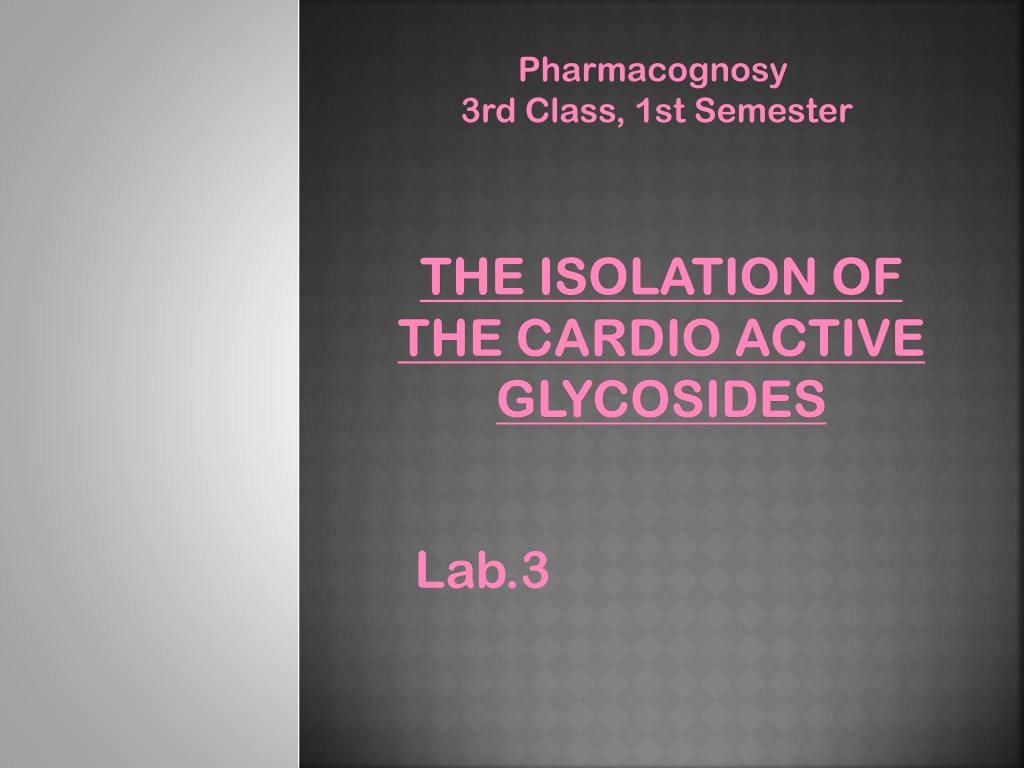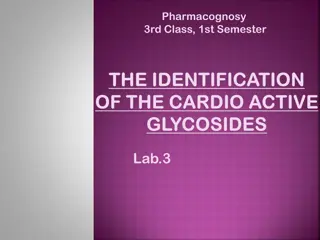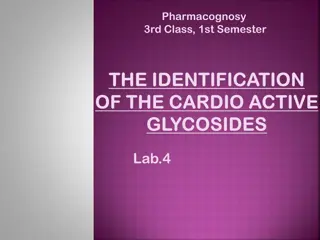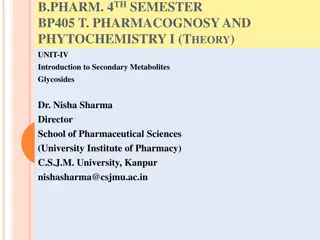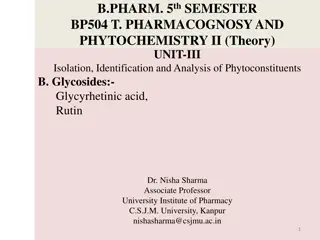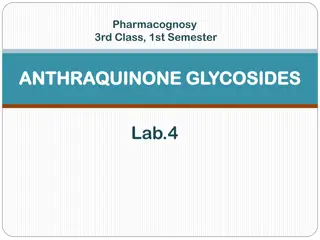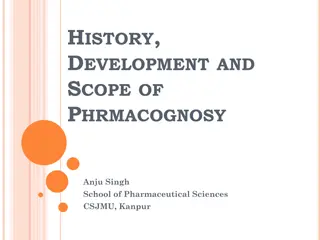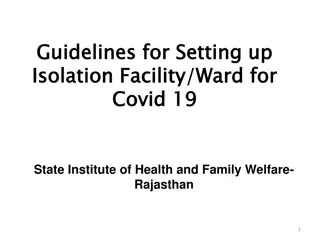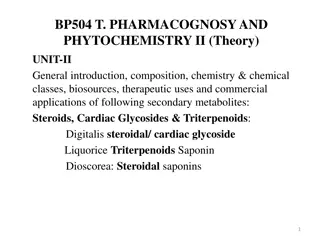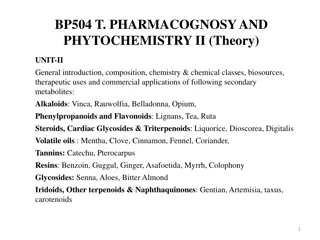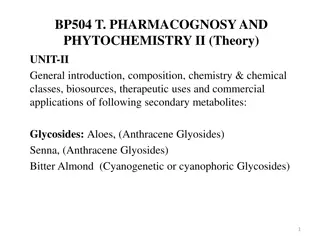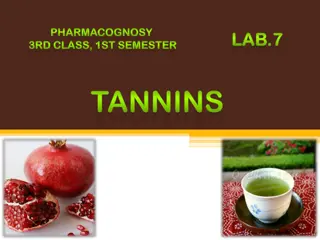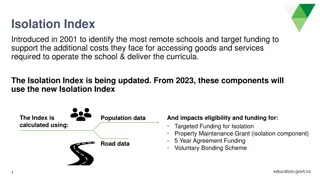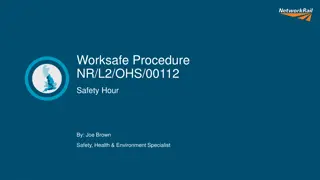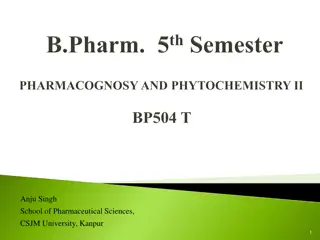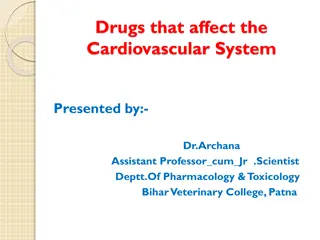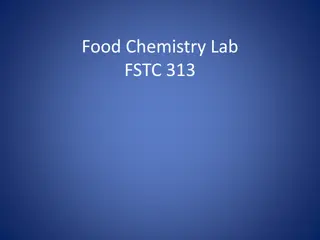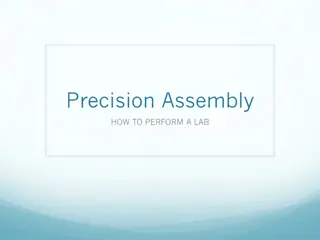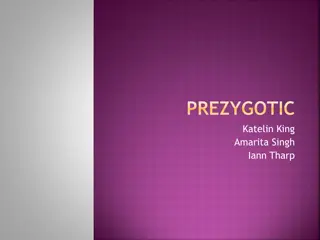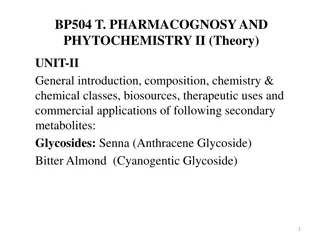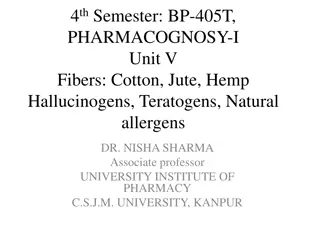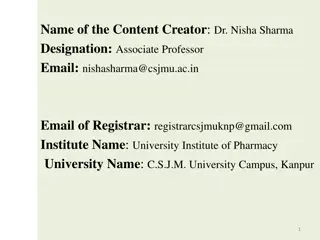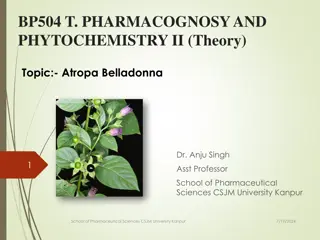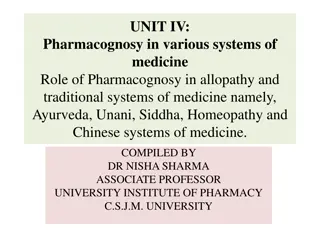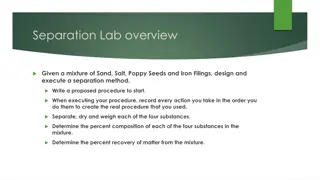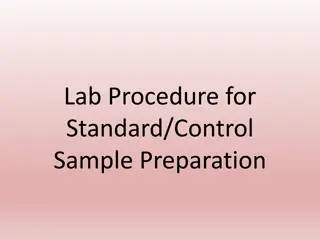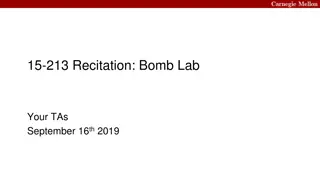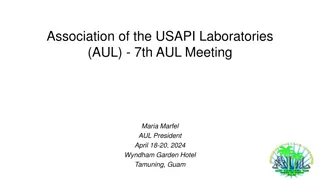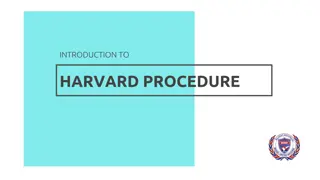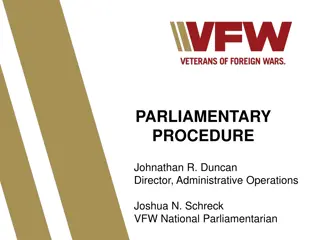Isolation of Cardioactive Glycosides in Pharmacognosy Lab: Procedure and Results
In this pharmacognosy lab experiment, the aim is to isolate cardioactive glycosides from plant material using various equipment and reagents. The procedure involves maceration, extraction, and separation steps to isolate Fraction A containing the whole glycoside. The results indicate successful isolation of the desired compound for further analysis.
Download Presentation

Please find below an Image/Link to download the presentation.
The content on the website is provided AS IS for your information and personal use only. It may not be sold, licensed, or shared on other websites without obtaining consent from the author. Download presentation by click this link. If you encounter any issues during the download, it is possible that the publisher has removed the file from their server.
E N D
Presentation Transcript
Pharmacognosy 3rd Class, 1st Semester THE ISOLATION OF THE ISOLATION OF THE CARDIO ACTIVE THE CARDIO ACTIVE GLYCOSIDES GLYCOSIDES Lab.3
EXTRACTION EXTRACTION Aim: - to isolate the cardio active glycoside Equipment and reagents Equipment and reagents Large beaker &two medium size beakers Two conical flask Sintered glass (Sintered glass is a glass mesh used for filtration. It can be used instead of filter paper). Centrifuge ¢rifuge tube Separatory funnel Water bath or rotary evaporator 70% ethanol Lead sub acetate (Lead sub acetate is added to precipitate tannins and other unwanted material) 10% sodium phosphate solution (10%sodium phosphate is added to take the excess of lead sub acetate)
CONT CONT Chloroform-ethanol (3:1 v/v) (Use of chloroform-ethanol in partition is due to the fact that the chloroform will take the genin part while the ethanol will take the glycoside there will be no loss in the glycoside) Anhydrous sodium sulphate (Anhydrous sodium sulphate is added in during mixture since the anhydrous form will act as an adsorbent) 4 N HCL (4N HCL is used to hydrolyze the glycoside to glycone and aglycone parts) Chloroform (Use of chloroform alone is to extract the genin part So fraction A, will contain the whole glycoside, while fraction B will contain only the genin part)
PROCEDURE PROCEDURE Maceration 10 gm of the powdered leaf in 100ml of the 70%ethanol for 24hr Filtrate the macerate through a sintered glass to yield a clear filtrate Place 60 ml of the alcoholic extract in conical flask Add 25 ml of 0.1% of lead sub acetate Mix thoroughly and standing for two minutes
Placing the mixture in the centrifuge tubes and centrifuging for several minutes Decant and take the supernatant into a flask and add 35 ml of 10% sodium phosphate solution Mix thoroughly and centrifuge then divide the mixture you had into two divisions FRACTION FRACTION A A FRACTION FRACTION B B
FRACTION FRACTION A A Take one of the two divisions and put in a separatory funnel Shake it with three quantities each of 50 ml of chloroform ethanol (3:1 v/v) Dry by the addition of a small quantity of anhydrous sodium sulphate and allow standing for a few minutes Decant the chloroform-ethanol extract and reduce the volume to about 1ml on rotary evaporator or (water bath) Results Results Fraction Fraction A A contains the whole glycoside
FRACTION FRACTION B B Place the other division of the extract in a conical flask, and then add 6ml of 4N HCL Place in a boiling water bath for 20 minutes cool the hydrolysate and transfer to a separatory funnel (Boiling is to accelerate the process of hydrolysis). Partition with three quantities each of 25ml of chloroform Dry with a small quantity of anhydrous sodium sulphate Decant the chloroform and reduce the volume to about 1ml on a rotary evaporator (or water bath) Results Results Fraction Fraction B B: :- - contains the genin part only
